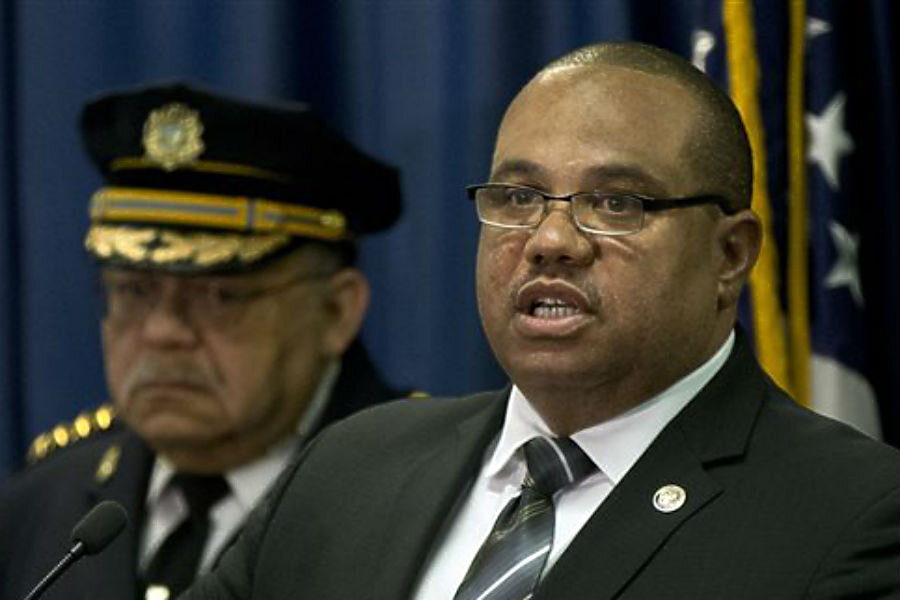Poor Philadelphia police training blamed for use of deadly force
Loading...
| Philadelphia
Poor training has left Philadelphia police officers with the mistaken belief that fearing for their lives alone is justification for using deadly force, the Justice Department said Monday in a review of the city's nearly 400 officer-involved shootings since 2007.
That notion, inconsistent with police policy and court rulings on police-involved shootings, appeared to stem from the Philadelphia department's lack of regular, consistent training on its deadly force policy, a Justice Department assessment team found.
Annual firearms training focuses on tactics and targets, with cursory mentions of the deadly force policy, the team found. Officers last received any form of in-depth training on the subject in 2010, in a course for officers from across Pennsylvania.
The team also found the department's investigations into officer-involved shootings lacked consistency, focus and timeliness and said the department should establish a single investigative unit for police shootings.
The Philadelphia Inquirer reported:
The report, written by the nonprofit Virginia-based CNA Corporation, said officers need additional alternatives to shooting people in deadly confrontations.
It noted officers are not trained on the use of nonlethal methods, such as Tasers, and are not required to carry pepper spray.
Regulations and training for when to discharge a weapons is "too infrequent, lacks the appropriate concepts, and, at times, lacks standards," the 174-page report stated.
Overall, it said, the training sometimes "leaves officers inadequately prepared to make decisions in an increasingly complex environment."
Philadelphia Police Commissioner Charles Ramsey requested the independent review after four straight days of police-involved shootings in May 2013. Three of those led to a suspect's death.
Officers in the nation's fifth-largest city fatally shot 96 suspects between 2007 and 2014, including 11 in 2013.
That number fell sharply last year. Officers shot at 29 suspects and killed four of them — the fewest officer-involved deaths in the eight years for which statistics are available.
Philadelphia officers killed 15 suspects in 2007 and 2009 and 16 in 2012. They also injured 32 people in 2012.
A team of Justice Department researchers and analysts spent a year on the assessment, visiting the city five times, interviewing 164 people and reviewing policies and procedures and the department's officer-involved shooting database.
They developed 91 recommendations and will help the department implement them over the next 18 months and issue two progress reports.
The Justice Department's announcement came days after the city's district attorney declined to charge officers in an officer-involved shooting in December of a suspect who reached into a car for a gun.
District Attorney Seth Williams said Brandon Tate-Brown's death in December was a tragedy, but not a crime.
Residents protesting the decision and demanding the names of the officers fought with police and threw chairs at a community meeting attended by Ramsey and Williams.
Ramsey called the display an embarrassment and said it reinforced his decision not to make the officers' names public.
The assessment team found most suspects in Philadelphia's officer-involved shootings were armed. It found 81 percent of suspects and 34 percent of officers were black and 59 percent of officers were white.
Copyright 2015 The Associated Press. All rights reserved. This material may not be published, broadcast, rewritten or redistributed





